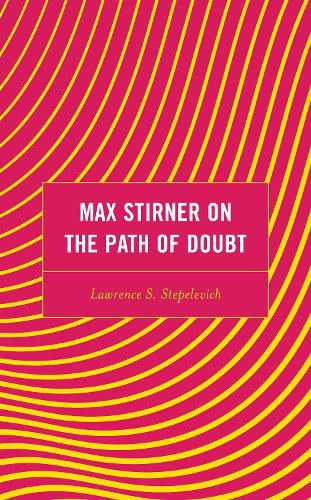Readings Newsletter
Become a Readings Member to make your shopping experience even easier.
Sign in or sign up for free!
You’re not far away from qualifying for FREE standard shipping within Australia
You’ve qualified for FREE standard shipping within Australia
The cart is loading…






Max Stirner on the Path of Doubt examines Stirner’s incisive criticism of his contemporaries during the period from the death of Hegel, in 1831, to the 1848 German Revolution. Stirner’s work, mainly the Ego and His Own, considered each of the major figures within that German school known as The Young Hegelians. Lawrence S. Stepelevich argues that for Stirner, they were but pious atheists, and their common revolutionary ideology concealed an ancient religious ground - which Stirner set about to reveal. The central doctrine of this school, that Mankind was its own Savior, was initiated in 1835 by the theologian, David F. Strauss’s in his Life of Jesus , and it progressed with August von Cieszkowski’s mystical recasting of history, followed by Bruno Bauer’s absolute atheism and Ludwig Feuerbach’s statement that Man is God. This soon found reflection in the Sacred History of Mankind declared by Moses Hess. Within a decade, the result was the secular reformulation of this theological ideology into the Scientific Socialism of Karl Marx and Frederick Engels. Although linked to it, Max Stirner was the most relentless and feared critic of this school. His work, never out of print, but largely ignored by academics, has inspired countless individualists set upon rejecting any form of religious or political causes, and finding Stirner’s assertion that he had set his cause upon nothing took this as their own cause.
$9.00 standard shipping within Australia
FREE standard shipping within Australia for orders over $100.00
Express & International shipping calculated at checkout
Max Stirner on the Path of Doubt examines Stirner’s incisive criticism of his contemporaries during the period from the death of Hegel, in 1831, to the 1848 German Revolution. Stirner’s work, mainly the Ego and His Own, considered each of the major figures within that German school known as The Young Hegelians. Lawrence S. Stepelevich argues that for Stirner, they were but pious atheists, and their common revolutionary ideology concealed an ancient religious ground - which Stirner set about to reveal. The central doctrine of this school, that Mankind was its own Savior, was initiated in 1835 by the theologian, David F. Strauss’s in his Life of Jesus , and it progressed with August von Cieszkowski’s mystical recasting of history, followed by Bruno Bauer’s absolute atheism and Ludwig Feuerbach’s statement that Man is God. This soon found reflection in the Sacred History of Mankind declared by Moses Hess. Within a decade, the result was the secular reformulation of this theological ideology into the Scientific Socialism of Karl Marx and Frederick Engels. Although linked to it, Max Stirner was the most relentless and feared critic of this school. His work, never out of print, but largely ignored by academics, has inspired countless individualists set upon rejecting any form of religious or political causes, and finding Stirner’s assertion that he had set his cause upon nothing took this as their own cause.